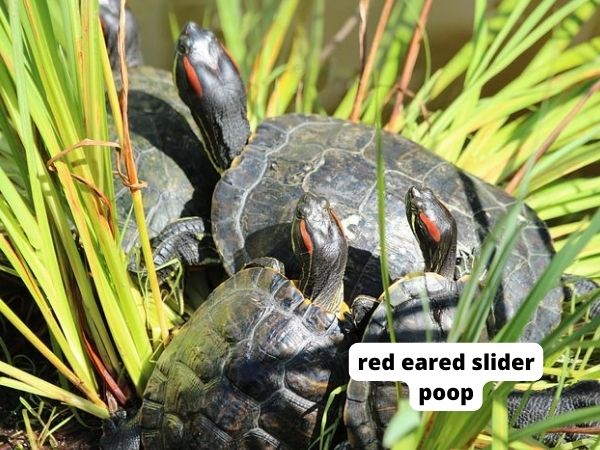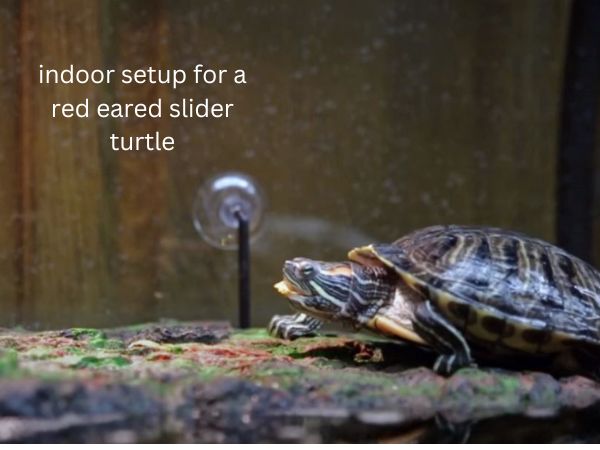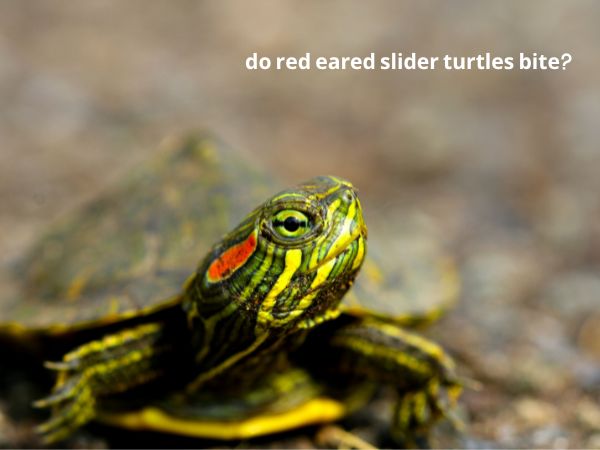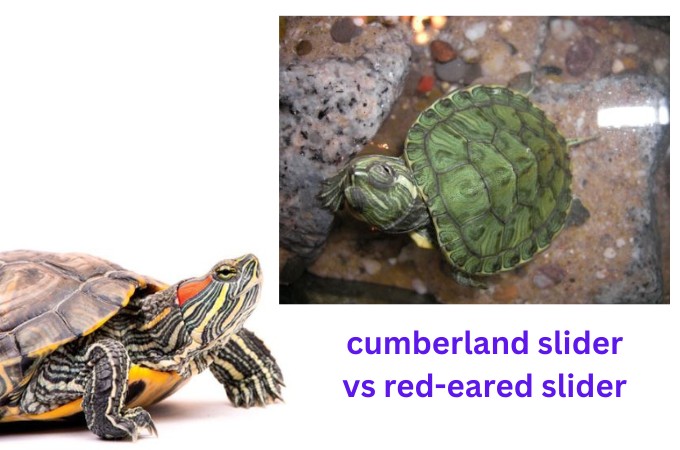Red-eared Slider Turtle Shedding Frequency And Problems
Welcome to the wild and fascinating world of red-eared slider turtles! If you’re curious about the shedding frequency and problems these adorable creatures face, you’ve come to the right place. Let’s dive in and explore their unique shedding behaviors and how to ensure their health and well-being!
Did you know that red-eared slider turtles are known for their distinct red patch behind their eyes? These aquatic turtles are popular pets due to their vibrant appearance and engaging personalities. Just like humans, red-eared sliders also shed their skin regularly to grow and stay healthy. In this article, we’ll uncover the shedding frequency of these amazing creatures and address any shedding-related concerns you may have.
Whether you’re a red-eared slider owner or simply fascinated by these reptiles, understanding their shedding process is crucial for their overall health and happiness. So, grab your snorkel, get ready to explore, and let’s dive into the mesmerizing world of red-eared slider turtle shedding!
Red-eared slider turtles shed their skin periodically to accommodate their growth. Shedding frequency varies depending on factors such as age, diet, and environmental conditions. Shedding problems may arise if the turtle is not provided with proper humidity or nutrition. To ensure a healthy shedding process, maintain a clean and warm habitat, provide a balanced diet, and offer a shallow water area for soaking. If shedding issues persist, consult a reptile veterinarian for guidance.
Red-eared Slider Turtle Shedding Frequency and Problems: A Comprehensive Guide
Shedding is a natural process that occurs in red-eared slider turtles. It allows them to grow and replace old, damaged skin. Understanding the shedding frequency and potential problems that can arise during this process is essential for ensuring the health and well-being of your pet turtle. In this comprehensive guide, we will explore the different aspects of red-eared slider turtle shedding, including the frequency, signs of healthy shedding, common problems, and how to address them.
Understanding the Shedding Process
Red-eared slider turtles shed their skin in order to accommodate growth and repair any damage. Shedding is a vital part of their natural life cycle, and it typically occurs as they outgrow their current shell size. Shedding is most commonly observed in young turtles, as they experience more rapid growth compared to adults.
During shedding, the outermost layer of the turtle’s skin, known as the epidermis, is shed off. This process enables the turtle to remove any parasites, dead skin cells, or other substances that may accumulate on the surface. Shedding also helps the turtle maintain healthy skin and allows for the growth of new skin cells.
The frequency of shedding varies from turtle to turtle and is influenced by factors such as age, health, and environmental conditions. Young turtles may shed more frequently, approximately every two to three weeks, while older turtles may shed less often, typically every few months. It is important to monitor your turtle’s shedding frequency and identify any potential issues that may arise.
Signs of Healthy Shedding
Healthy shedding is characterized by certain signs and behaviors exhibited by red-eared slider turtles. By understanding these signs, you can determine if your turtle is shedding properly or if there may be underlying issues. Here are some indicators of healthy shedding:
1. Increased activity: Turtles may become more active and restless during the shedding process. They may swim around more frequently and exhibit increased exploration behavior.
2. Flaking skin: As the shedding process begins, you may notice small, whitish flakes or patches on the turtle’s skin. This is a normal sign of shedding and indicates that the outer skin layer is separating.
3. Cloudy eyes: Red-eared slider turtles often develop a cloudy appearance in their eyes just before shedding. This occurs because the skin covering the eyes also sheds. The cloudiness should dissipate once the shedding is complete.
4. Increased appetite: Healthy turtles typically have a good appetite during shedding. If your turtle continues to eat regularly and shows enthusiasm for food, it is a positive sign that the shedding process is going smoothly.
During the shedding process, it is important to ensure that your turtle has a clean and comfortable environment. Maintain proper water quality and temperature, provide a basking area, and offer a balanced diet to support overall health and facilitate a successful shed.
Common Problems During Shedding
Although shedding is a natural process, red-eared slider turtles can sometimes encounter difficulties or face complications. Being aware of these problems will help you identify and address them promptly. Here are some common issues that may occur during shedding:
1. Incomplete shedding: Sometimes, a turtle may experience incomplete shedding, where parts of the old skin remain attached. This can lead to discomfort and irritation. If you notice any residual skin, you can gently assist in the removal using a soft, damp cloth. Avoid pulling or tearing the skin forcefully, as this can cause injury.
2. Dry or cracked skin: Insufficient humidity in the turtle’s habitat can result in dry, cracked skin. Dry conditions make shedding more challenging and can lead to complications. Ensure that your turtle’s environment has appropriate humidity levels, typically between 50% to 70%, to prevent skin dryness.
3. Shell rot: Poor water quality or inadequate basking areas can contribute to shell rot, a bacterial or fungal infection that affects the turtle’s shell during shedding. Signs of shell rot include discoloration, soft spots, or foul odor. Promptly address any signs of shell rot by improving water quality and ensuring proper basking conditions.
4. Lack of appetite: If your turtle exhibits a decreased appetite during shedding, it may indicate underlying stress or discomfort. Monitor your turtle’s behavior and seek veterinary advice if the lack of appetite persists or if other concerning symptoms are present.
Additional Considerations for Red-eared Slider Turtle Shedding
Keeping your red-eared slider turtle’s shedding process smooth and problem-free requires attention to various factors. Here are three additional considerations to keep in mind:
Optimizing Environmental Conditions for Shedding
Maintaining an optimal environment for your red-eared slider turtle is crucial for successful shedding. Consider the following factors:
– Temperature: Ensure that the water temperature is between 75°F and 85°F (24°C and 29°C) and the basking area temperature is around 90°F (32°C). These temperatures support shedding by promoting skin flexibility.
– Humidity: Maintain a humidity level of 50% to 70% in the turtle’s habitat. This helps to keep the skin hydrated and supple, easing the shedding process.
– Clean water: Keeping the water clean and properly filtered prevents the accumulation of bacteria or parasites that can cause skin problems during shedding.
Balanced Diet for Healthy Shedding
The diet plays a crucial role in promoting and supporting healthy shedding. A balanced and nutritious diet provides the necessary vitamins and minerals for optimal skin health. Here are some dietary considerations:
– Variety: Offer a diverse diet that includes commercial turtle pellets, leafy greens, and occasional live or frozen prey such as brine shrimp or bloodworms. This ensures the intake of essential nutrients.
– Calcium supplementation: Calcium is vital for strong and healthy shells. Dust the turtle’s food with a calcium supplement to ensure an adequate intake of this essential mineral.
– Proper portion sizes: Be mindful of portion sizes to prevent overfeeding, which can lead to excessive weight gain and potential health issues.
Regular Health Checks
Regular veterinary check-ups are essential for maintaining your red-eared slider turtle’s overall health, including proper shedding. A veterinarian experienced in reptile care can examine your turtle, assess skin condition, and provide guidance on any concerns or problems you may have noticed. Regular check-ups help detect early signs of potential issues and ensure timely intervention.
In conclusion, understanding red-eared slider turtle shedding frequency and potential problems is vital for ensuring the well-being of your pet turtle. By monitoring shedding frequency, recognizing signs of healthy shedding, addressing common problems promptly, and providing an optimal environment, a balanced diet, and regular health checks, you can help your red-eared slider turtle go through the shedding process smoothly and maintain healthy skin and overall wellness.
Key Takeaways: Red-eared slider turtle shedding frequency and problems
- 1. Red-eared slider turtles shed their skin regularly to accommodate their growth and remove parasites.
- 2. Shedding frequency varies but usually occurs every 2-4 weeks for younger turtles.
- 3. Older turtles may shed less frequently, around every 2-3 months.
- 4. Inadequate shedding can lead to shell deformities or skin infections, so proper care is essential.
- 5. Providing a healthy diet, UVB lighting, and clean habitat can promote successful shedding for red-eared slider turtles.
Frequently Asked Questions
Welcome to our FAQ section on red-eared slider turtle shedding frequency and problems! If you own a red-eared slider, you may have questions about how often they shed their skin and the problems that can arise during this process. We’ve compiled a list of common queries and provided detailed answers to help you understand more about your turtle’s shedding habits and how to address any issues that may arise.
1. How often do red-eared slider turtles shed their skin?
Red-eared slider turtles typically shed their skin once every four to six weeks while they are growing. As they age, the shedding frequency may decrease to once every few months. Shedding is a natural process for red-eared sliders to remove old, worn-out skin and replace it with new skin.
Keep in mind that while shedding is a regular occurrence, the frequency can vary slightly between turtles. It’s important to monitor your turtle’s behavior and overall health to ensure they are shedding properly and not experiencing any complications.
2. What are the signs that my red-eared slider turtle is about to shed?
There are a few signs that your red-eared slider turtle is preparing to shed its skin. One common indication is a dull or cloudy appearance to their shell or skin. They may also exhibit increased scratching or rubbing against objects in their habitat. Additionally, you might notice small pieces of skin flaking off around their shell or basking areas.
It’s important to note that red-eared sliders may become slightly more reclusive or less active before shedding. While these signs are generally normal, it’s crucial to maintain a close eye on your turtle’s behavior and ensure they are shedding properly.
3. Are there any problems that can arise during a red-eared slider turtle’s shedding process?
Yes, there are a few problems that can occur during a red-eared slider turtle’s shedding process. One common issue is called “retained shed,” where some areas of the old skin do not fully detach from the turtle’s body. This can lead to irritation, infection, or restricted movement for the turtle.
If you notice retained shed on your turtle, it’s recommended to provide a warm soak to help loosen the old skin. Gently assist the shedding process by carefully removing any loose skin with tweezers, being extremely cautious not to harm the turtle. If the retained shed persists or seems to be causing discomfort, it’s best to consult a veterinarian who specializes in reptile care.
4. How can I help my red-eared slider turtle during the shedding process?
There are a few ways you can assist your red-eared slider turtle during the shedding process. One method is to provide a separate container filled with shallow, warm water to help soften the skin and facilitate shedding. Your turtle can soak in this container for 15-20 minutes daily.
Another helpful tip is to ensure proper humidity levels in their enclosure. Maintaining a humidity level of around 50-60% can aid in the shedding process by preventing the skin from drying out too much. Additionally, offering various objects for your turtle to rub against, such as rocks or logs, can help remove loose skin.
5. When should I be concerned about my red-eared slider turtle’s shedding?
If you notice any significant changes in your red-eared slider turtle’s shedding patterns or behavior, it’s essential to be vigilant. Signs that may indicate a problem include prolonged periods between shedding, incomplete shedding, excessive scratching leading to injury, or any signs of infection.
If you suspect an issue, it’s recommended to seek guidance from a reptile veterinarian. They can examine your turtle, assess their overall health, and provide appropriate treatment if necessary. It’s best not to ignore any potential problems and take proactive measures to ensure your turtle’s well-being.
Summary
If you have a red-eared slider turtle as a pet, it’s important to understand their shedding habits. These turtles shed their skin and scutes (hard plates on their shell) regularly to grow and heal. Shedding frequency and problems can vary depending on factors like age, health, and habitat. It’s normal for adult turtles to shed once or twice a year, while younger turtles may shed more often. However, frequent or incomplete shedding can indicate health issues and should be monitored. To help your turtle shed properly, provide a varied diet, maintain a clean habitat, and offer a designated shedding area.
Remember to be patient and avoid assisting in the shedding process unless absolutely necessary. While it may seem alarming to see your turtle struggling, interfering can cause harm. If you notice excessive redness, swelling, or bleeding during shedding, it’s best to consult a reptile veterinarian for proper care. By understanding and monitoring your red-eared slider turtle’s shedding patterns, you can ensure their overall health and well-being.




